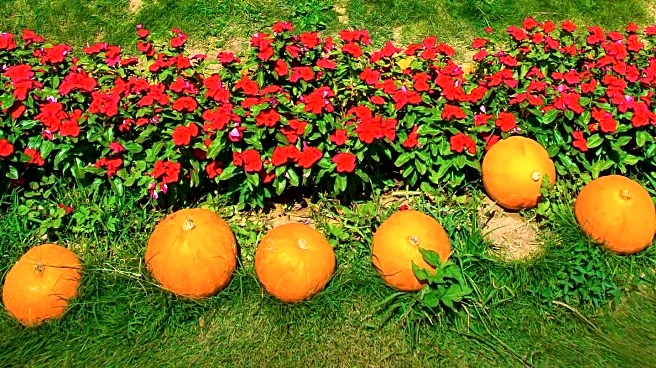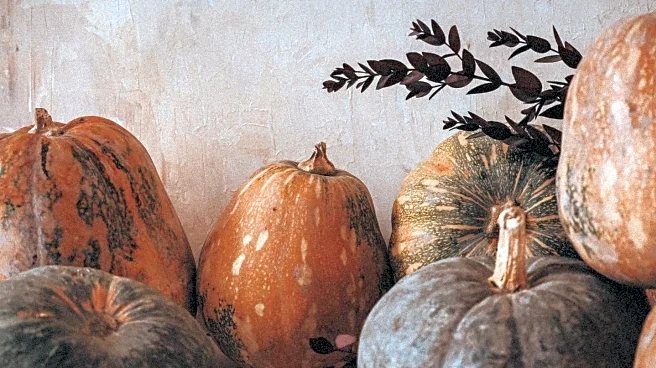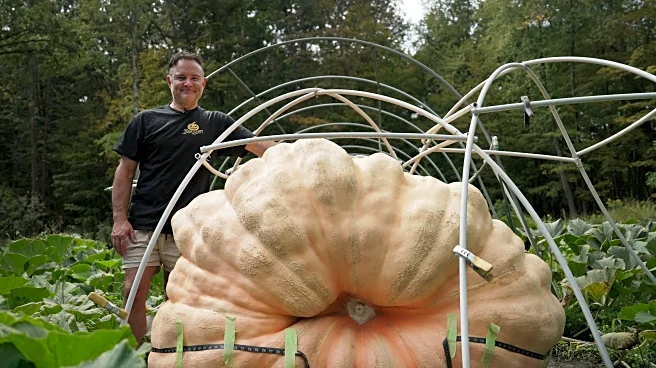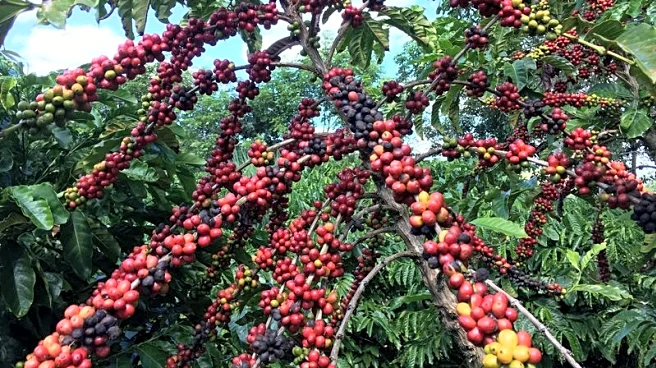What is the story about?
What's Happening?
In upstate New York, Tony Scott has successfully grown a giant pumpkin weighing 1,931 pounds, securing third place in an annual weigh-off competition. The process of growing such massive pumpkins involves selecting the right seeds, such as the Atlantic Giant, and providing optimal care, including ample water and nutrients. Growers like Scott use techniques to maximize growth, such as removing smaller pumpkins to concentrate resources on a single fruit. The pumpkins, which can consume hundreds of gallons of water daily, are a highlight at fall festivals and Halloween events.
Why It's Important?
The cultivation of giant pumpkins showcases the intersection of agriculture and science, highlighting how scientific methods can enhance traditional farming practices. These competitions not only celebrate agricultural achievements but also foster community engagement and interest in horticulture. The ability to grow such large produce can inspire innovations in crop production and sustainability, potentially impacting food security and agricultural practices. Additionally, these events contribute to local economies by attracting visitors and participants.
Beyond the Headlines
The practice of growing giant pumpkins raises questions about the sustainability and environmental impact of such agricultural feats. The resources required to grow these pumpkins, including water and fertilizers, may not be feasible on a larger scale. However, the techniques developed could inform more sustainable practices for other crops. The cultural significance of these pumpkins, particularly during fall festivities, reflects broader societal values around tradition, competition, and community celebration.
AI Generated Content
Do you find this article useful?















